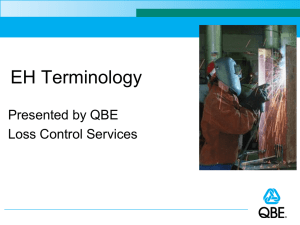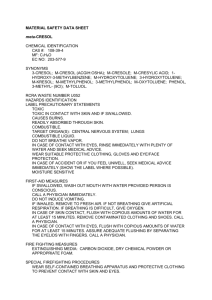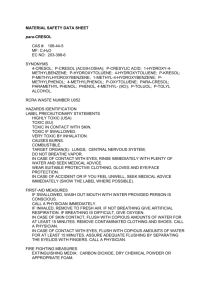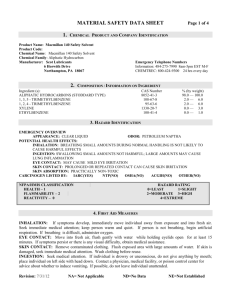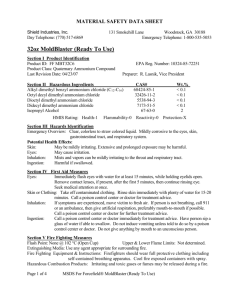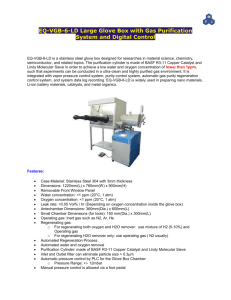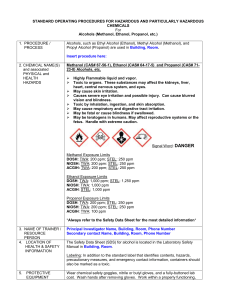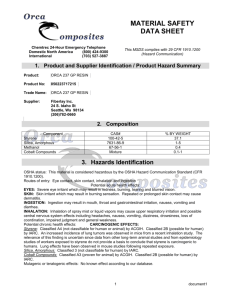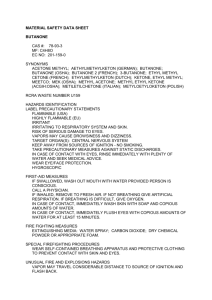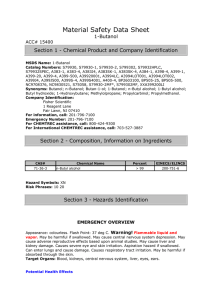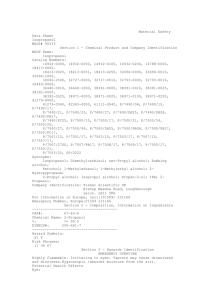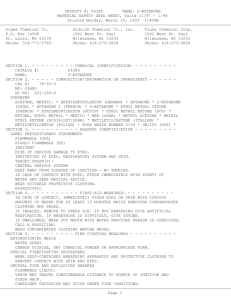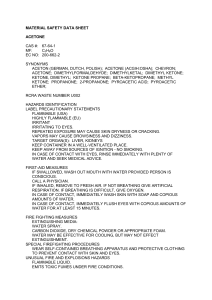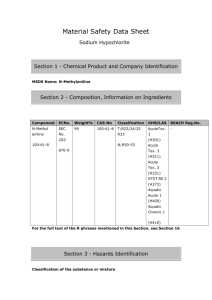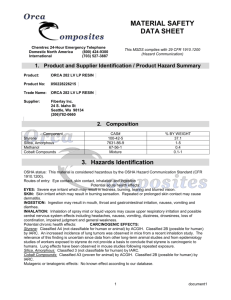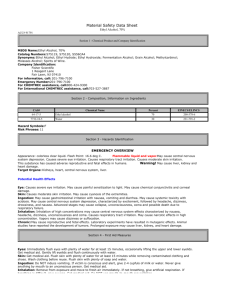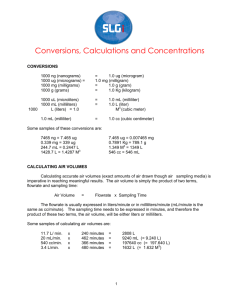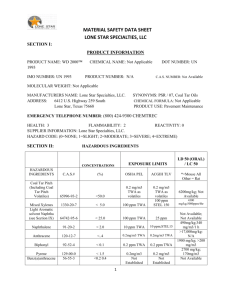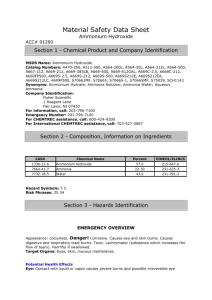Exposure to Formaldehyde in the Laboratory
advertisement
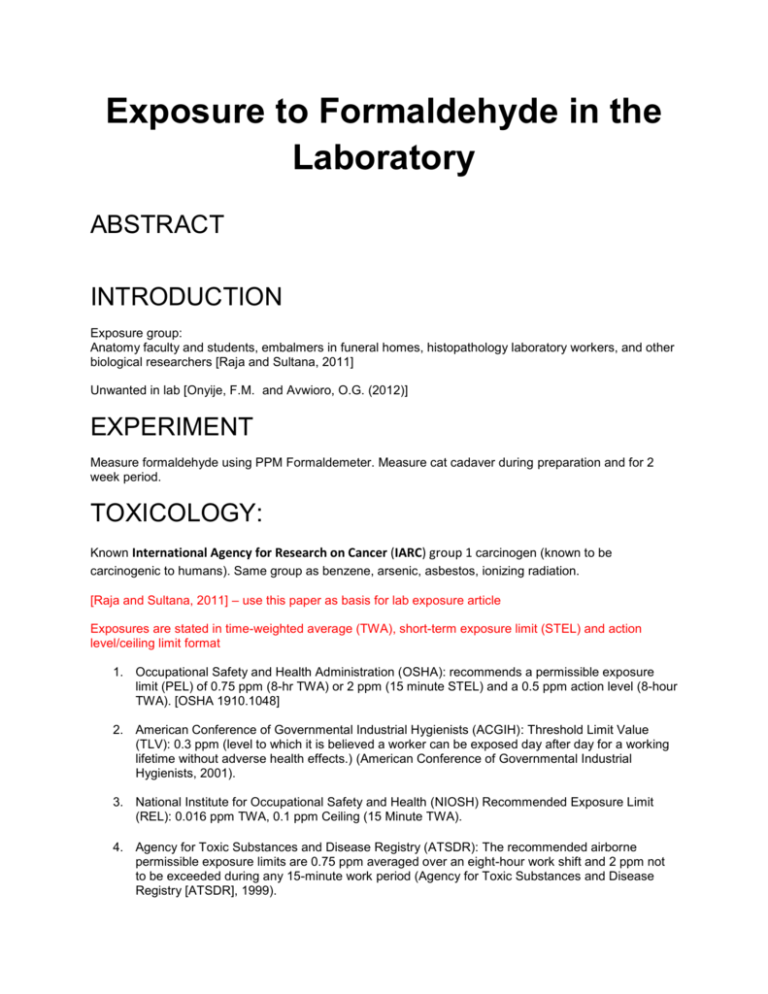
Exposure to Formaldehyde in the Laboratory ABSTRACT INTRODUCTION Exposure group: Anatomy faculty and students, embalmers in funeral homes, histopathology laboratory workers, and other biological researchers [Raja and Sultana, 2011] Unwanted in lab [Onyije, F.M. and Avwioro, O.G. (2012)] EXPERIMENT Measure formaldehyde using PPM Formaldemeter. Measure cat cadaver during preparation and for 2 week period. TOXICOLOGY: Known International Agency for Research on Cancer (IARC) group 1 carcinogen (known to be carcinogenic to humans). Same group as benzene, arsenic, asbestos, ionizing radiation. [Raja and Sultana, 2011] – use this paper as basis for lab exposure article Exposures are stated in time-weighted average (TWA), short-term exposure limit (STEL) and action level/ceiling limit format 1. Occupational Safety and Health Administration (OSHA): recommends a permissible exposure limit (PEL) of 0.75 ppm (8-hr TWA) or 2 ppm (15 minute STEL) and a 0.5 ppm action level (8-hour TWA). [OSHA 1910.1048] 2. American Conference of Governmental Industrial Hygienists (ACGIH): Threshold Limit Value (TLV): 0.3 ppm (level to which it is believed a worker can be exposed day after day for a working lifetime without adverse health effects.) (American Conference of Governmental Industrial Hygienists, 2001). 3. National Institute for Occupational Safety and Health (NIOSH) Recommended Exposure Limit (REL): 0.016 ppm TWA, 0.1 ppm Ceiling (15 Minute TWA). 4. Agency for Toxic Substances and Disease Registry (ATSDR): The recommended airborne permissible exposure limits are 0.75 ppm averaged over an eight-hour work shift and 2 ppm not to be exceeded during any 15-minute work period (Agency for Toxic Substances and Disease Registry [ATSDR], 1999). [All from http://www.osha.gov/dts/chemicalsampling/data/CH_242600.html] The toxic effects of formaldehyde exposure can be classified as follows: irritation of mucous membrane, contact dermatitis, teratogenicity, and carcinogenicity (National Institute for Occupational Safety and Health [NIOSH], 2009). Hazards of USING FORMALDEHYDE All outline in [Raja and Sultana, 2011] need to be condensed/summarized. Risk or chance of these hazards may be reduced using the proper procedures and ventilation requirements, summarize from [Raja and Sultana, 2011]. DISCUSSION Dissection lab values do not exceed the levels above. The strictest permissible exposure level is held by NIOSH as a TWA of 0.016 ppm over 8 hours. The next strictest value is NIOSHs 0.1 ceiling. Discuss if values exceed OSHA, NIOSH, ACGIH or ATSDR 1. What are levels in working lab following [Raja and Sultana, 2011] 11 guidelines? CALCULATION Nazaroff 2004: ‘‘no significant risk levels’’ (NSRLs) have been established for inhalation exposure to some chemicals known to cause cancer by the State of Calif ornia (OEHHA, 2003). These levels are set at a value such that lifetime exposure at that value would increase the estimated risk of cancer by 10-5. Sample NSRLs are 7 µg d-1 for benzene, 40 µg d-1 for formaldehyde, and 14 µg d-1 for tetrachloroethylene. Background (0.02 ppm) exposure leads to exceedence of NSRL levels Example: If you breath 11 x103 L of air for one day with 0.02 ppm formaldehyde how many µg d-1 are you inhaling? Assuming an average human lung tidal volume of 0.5 L and 15 breaths per minute: 0.5 L X 15 breaths/minute x 60 minutes/hour x 24 hours/day = 10,800 liters per day, or 3,600 L in 8 hours. Giving a one day (8 hour exposure) at 0.02 ppm of: 3.6 x 103 L x 0.02 mg/L = 72 mg/d = 72 x 103 µg d-1. Exceed California’s NSRL by 3 orders of magnitude. Also calculated as dose rate: 9,000 µg/hr
